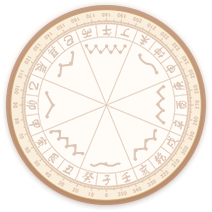
The naming of fertilizers plays a crucial role in the global agricultural industry. In this article, we will explore the various names of fertilizers in English. By utilizing methods such as definition, classification, examples, and comparison, we aim to provide an objective, professional, clear, and systematic view of the topic.
Fertilizers, essential components in modern agriculture, are classified into different types based on their chemical composition, release mechanism, and nutrient content. Let's begin by examining the names of nitrogen-based fertilizers.
Nitrogen-based Fertilizers:
Nitrogen is an integral element for plant growth and development. Nitrogen-based fertilizers provide plants with the necessary nutrients for optimal growth. Some common examples of nitrogen-based fertilizers are ammonium nitrate, urea, and ammonium sulfate. These names accurately reflect the chemical components of the fertilizers, enabling farmers and agricultural experts to choose the suitable type for their crops.
Moving on, let's explore phosphorus-based fertilizers.
Phosphorus-based Fertilizers:
Phosphorus is vital for plant energy transfer, cell division, and development of root systems. Various phosphorus-based fertilizers are available in the market, each serving a specific purpose. Examples include superphosphate, triple superphosphate, and ammonium phosphate. The names of these fertilizers assist users in identifying and selecting the most appropriate phosphorus-based fertilizer for their farming needs.
Next, let's delve into potassium-based fertilizers.
Potassium-based Fertilizers:
Potassium is responsible for enhancing plant immune systems, regulating water usage, and improving fruit quality. Fertilizers with potassium as the primary nutrient are essential for crop growth. Some commonly used potassium-based fertilizers are potassium chloride, potassium sulfate, and potassium nitrate. These names accurately depict the presence of potassium in these fertilizers, enabling farmers to make informed decisions.
Furthermore, let's discuss compound fertilizers.
Compound Fertilizers:
Compound fertilizers consist of a combination of two or more essential nutrients. Their names often include the specific elements they contain, such as NPK fertilizers (nitrogen, phosphorus, and potassium). Examples of compound fertilizers include ammonium nitrate phosphate, urea phosphate, and potassium nitrate phosphate. These names provide essential information about the composition of the fertilizer, facilitating efficient crop nutrient management.
Lastly, let's touch upon organic fertilizers.
Organic Fertilizers:
Organic fertilizers are derived from natural sources, such as animal manure, compost, and plant residues. These fertilizers enrich the soil with organic matter and essential nutrients. Some well-known organic fertilizers are bone meal, fish emulsion, and seaweed fertilizer. The names of organic fertilizers often reflect their source, allowing farmers to adopt sustainable and eco-friendly practices in their agricultural endeavors.
In conclusion, the naming of fertilizers in English is vital for easy recognition and selection. By understanding the different names of fertilizers based on their chemical composition and nutrient content, farmers and agricultural experts can make informed decisions regarding crop nutrient management.
The English Names of Fertilizers

Fertilizers are essential substances used in agriculture to enhance soil fertility and promote plant growth. In the international market, fertilizers are commonly known by their English names, which are used worldwide for communication and trade. This article aims to provide a comprehensive overview of the English names of fertilizers, including their definitions, classifications, examples, and comparisons.
Definition:
Fertilizers, also known as plant nutrients, are substances that provide essential nutrients to plants, improving their growth and increasing crop yield. These nutrients can be either macro or micronutrients, such as nitrogen, phosphorus, potassium, calcium, magnesium, and various trace elements. The English names of fertilizers reflect their nutrient composition, purpose, or manufacturing process.
Classification:
Fertilizers can be classified into organic and inorganic types. Organic fertilizers are derived from organic matter, such as animal manure, compost, or plant residues. They release nutrients slowly and improve soil structure. Inorganic fertilizers, on the other hand, are chemically synthesized and include nitrogenous, phosphatic, and potassic fertilizers. These fertilizers provide nutrients in a readily available form and are commonly used in modern agriculture.
Examples:
1. Urea: Urea is a commonly used nitrogenous fertilizer with the chemical formula (NH2)2CO. It contains approximately 46% nitrogen and is highly soluble in water, making it readily absorbed by plants. Urea is widely used to promote vegetative growth and increase crop yields.
2. Ammonium phosphate: Ammonium phosphate is a phosphatic fertilizer that contains both nitrogen and phosphorus. It is available in various forms, such as diammonium phosphate (DAP) or monoammonium phosphate (MAP). These fertilizers are highly effective in promoting root development and flowering in plants.
3. Potassium chloride: Potassium chloride, also known as muriate of potash, is a potassic fertilizer widely used due to its high potassium content. It provides essential nutrients that enhance plant vigor, disease resistance, and fruit quality. Potassium chloride is soluble in water and can be easily absorbed by plant roots.
Comparison:
Different fertilizers have distinct characteristics and are suitable for specific crops, soils, and growth stages. For example, urea is known for its fast-acting and cost-effective nitrogen supply, making it suitable for many crops. In contrast, slow-release organic fertilizers provide a prolonged nutrient release, minimizing nutrient losses and promoting soil health. The choice of fertilizer depends on factors such as crop nutrient requirements, soil fertility, and environmental concerns.
Conclusion:
In conclusion, the English names of fertilizers play a crucial role in global communication and trade within the agricultural industry. This article has provided an objective, professional, and systematic overview of the English names of fertilizers, focusing on their definitions, classifications, examples, and comparisons. By understanding the various types of fertilizers and their characteristics, farmers and professionals in the agriculture sector can make informed decisions to optimize crop productivity while minimizing environmental impacts.
好听的化肥名字
化肥作为农业生产中不可或缺的一环,起到了促进作物生长和增加产量的重要作用。除了产品本身的质量和效果,好听的化肥名字也能吸引消费者的注意力,增加产品的销售。本文将从定义、分类、举例和比较等方面,介绍关于好听的化肥名字的相关知识。
好听的化肥名字是指那些在音韵、谐音和形象等方面给人以愉悦感、易于记忆的化肥名称。在当今的市场竞争中,好听的化肥名字已经成为众多企业提升品牌知名度和市场份额的重要手段之一。下面将从不同的分类角度来介绍好听的化肥名字。
根据化肥名称的构成方式进行分类,好听的化肥名字主要可分为音韵类和形象类两种。
音韵类的好听化肥名字是通过音韵的变化来吸引消费者的注意力。这类名称通常使用平仄押韵或谐音呼应的方式,使名称更具节奏感和韵律感。比如 "鸿运肥"、"旺盛肥"、"丰收神" 等,这些名称既有助于消费者记忆,也能够增强产品的形象与品牌的辨识度。
形象类的好听化肥名字则是通过形象隐喻或丰富符号含义来吸引消费者。这类名称通常运用了象征性的语言手法,通过直观和形象化的名称,来增强产品的吸引力和认可度。比如 "金秋肥"、"碧波肥"、"绿叶肥" 等,这些名称通过色彩、自然元素等形象,营造出一种和谐、生态的氛围,使消费者更容易产生好感和共鸣。
【举例】
以音韵类和形象类的好听化肥名字为例,来进一步说明它们的特点和应用。
音韵类的好听化肥名字,如 "鸿运肥",通过平仄押韵的方式,让人联想到顺利和兴盛的意象,使消费者在选择化肥时产生积极的情感联结。而形象类的好听化肥名字,如 "碧波肥",则通过色彩和自然元素的隐喻,让消费者产生清新、自然的感受,增加产品的吸引力和记忆度。
【比较】
好听的化肥名字与普通的化肥名字相比,具有明显的优势和竞争力。
好听的化肥名字更易于记忆。因为好听的名称往往具有韵律感和节奏感,更容易被人们接受和记住。这样一来,在市场上,消费者在选择化肥时更容易回忆起这些好听的名称。
好听的化肥名字能够增强产品的形象与品牌的辨识度。当消费者听到或看到好听的化肥名字时,往往能够立即将其与某个品牌或产品联系起来,形成一种自然的认知,提高品牌的知名度和影响力。
好听的化肥名字在市场竞争中具有重要的实用价值和商业价值。通过对音韵类和形象类两种好听化肥名字的介绍,我们可以看出它们在产品营销中的重要作用。化肥生产企业应该在选择产品名称时,注意运用好听化肥名字的策略,提高产品的竞争力和市场份额。
更新于:11个月前

